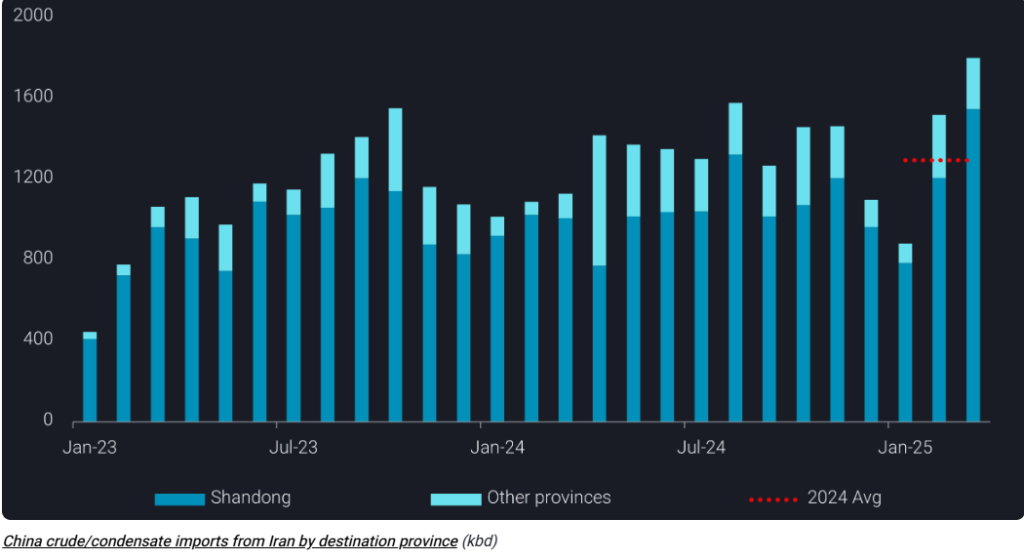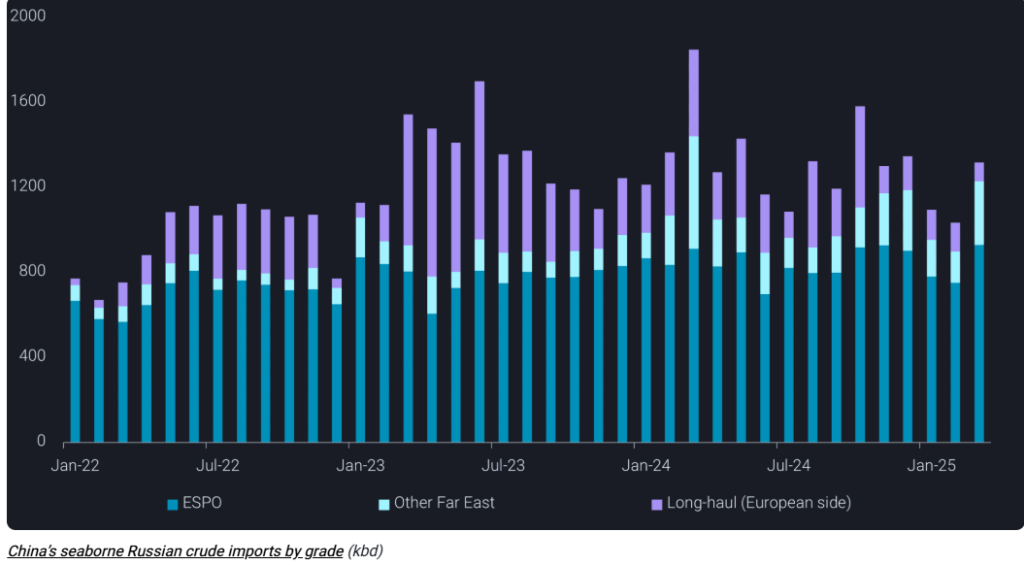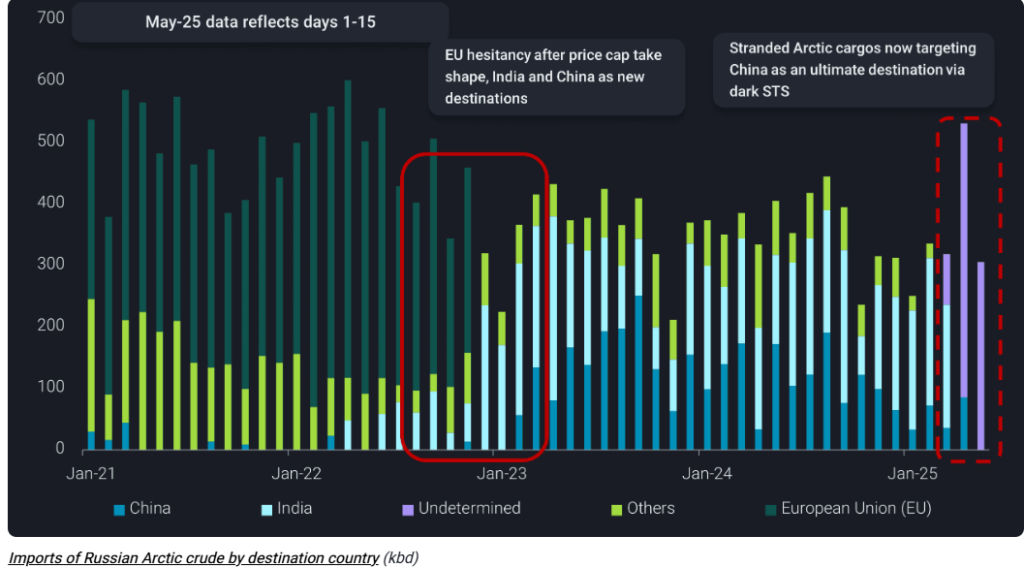
Shandong’s crude stockpiles reached record highs in March amid intensifying US sanctions.
This was due to Chinese teapot refiners increasing their imports of sanctioned crude, defying the US sanctions, Vortexa said in a report.
China’s seaborne crude imports, driven mostly by record Iranian crude arrivals into the Shandong region, reached 10.6 million barrels per day in March, the highest level since October 2023.
Refiners are rapidly increasing their crude oil stockpiles in response to concerns that the latest US sanctions against Iran-linked tankers could disrupt Iranian crude flows, according to the ship-tracking intelligence agency.
China’s imports of Iranian crude oil reached a new high in March, with 1.8 million barrels per day being imported.

Shandong province accounted for over 1.5 million barrels per day of this total, representing a nearly 50% increase from the 2024 average, Vortexa’s estimates showed.
Onshore inventories rise sharply
Shandong’s onshore crude inventories experienced their most rapid monthly stock build on record during March, increasing by over 20 million barrels. This surge closely corresponds to a rise in Iranian oil arrivals.
“The current high inventory levels have strengthened Shandong teapots’ bargaining power, allowing them to slow down on stockpiling and demand steeper discounts for upcoming deliveries,” Emma Li, senior market analyst at Vortexa, said.
Despite likely slower inbound flows in April, demand for discounted feedstock remains firm, buoyed by improved domestic refining margins in April as oil benchmark prices collapsed.
Iranian crude floating storage in the South China Sea decreased slightly from 33 million barrels at the start of March to 30 million barrels at the end, estimates showed.
The near 7-year-record export pace of almost 1.8 million barrels per day in March suggests Iran moved quickly to export barrels eastward ahead of potential supply disruptions.
Russian Arctic crude eyes Shandong
China’s seaborne imports of Russian crude oil rebounded to 1.3 million barrels per day in March, matching the 2024 average, Vortexa data showed.
This recovery was primarily driven by a surge in Far East grades, which reached a 12-month high.

This increase was due to buyers purchasing discounted Sokol and Sakhalin Blend cargoes that had been stranded since January and February.
These gains compensated for the decline in imports of long-haul Urals and Arctic crude, which were limited by a shortage of non-sanctioned tankers following the January 10 US sanctions.
Russian Arctic crude oil, shipped on sanctioned tankers after January 10, has started arriving in the South China Sea, Li said.
These shipments are aimed at teapot refiners who have significantly decreased their purchases of long-haul Russian barrels since 2024.
VLCC spotted in Shandong
A very large crude carrier (VLCC) that was not sanctioned and previously involved in Iranian ship-to-ship (STS) deliveries has been observed carrying Russian Arctic crude to Shandong, China.
The crude oil was loaded onto the VLCC via two STS transfers.

Li said:
This suggests Russian barrels were offered at even deeper discounts than Iranian crude, appealing to price-sensitive teapots.
Approximately 20 million barrels of Russian Arctic crude oil, currently being shipped to the Far East, is intended to meet Chinese demand, according to Vortexa.
The increasing surplus of sanctioned crude is anticipated to heighten competition and may encourage new entrants to the dark fleet to engage in STS transfers within the South China Sea, Li added.
The post China defies US sanctions with surge in Iranian crude imports as Shandong stocks hit record highs appeared first on Invezz

